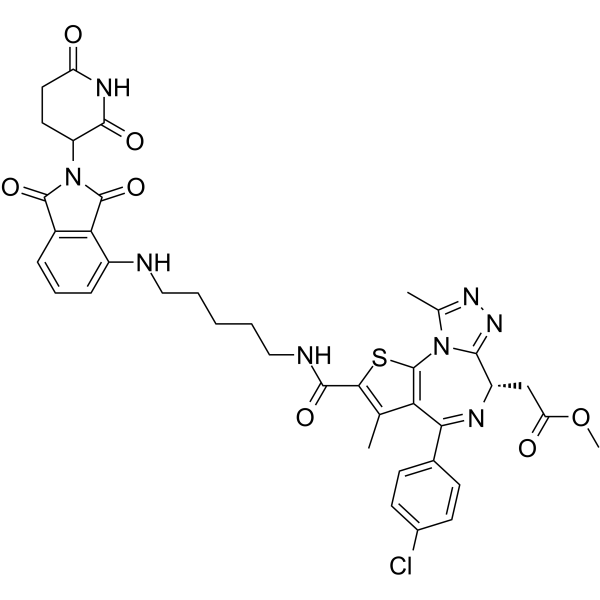PROTAC
PROTACs or Proteolysis Targeting Chimeric Molecules are heterobifunctional nanomolecules that theoretically target any protein for ubiquitination and degradation. In terms of the structure, PROTACs consist of one moiety which is recognized by the E3 ligase. This moiety is then chemically and covalently linked to a small molecule or a protein that recognizes the target protein. The trimeric complex formation leads to the transfer of ubiquitins to the target protein.
By removing target proteins directly rather than merely blocking them, PROTACs can provide multiple advantages over small molecule inhibitors, which can require high systemic exposure to achieve sufficient inhibition, often resulting in toxic side effects and eventual drug resistance. PROTAC molecules possess good tissue distribution and the ability to target intracellular proteins, thus can be directly applied to cells or injected into animals without the use of vectors.
Targeted protein degradation using the PROTAC technology is emerging as a novel therapeutic method to address diseases, such as cancer, driven by the aberrant expression of a disease-causing protein. In addition to the use of PROTACs for the treatment of human disease, these molecules provide a chemical genetic approach to “knock down” proteins to study their function. Currently, there are several small molecule inhibitors that have been found to show good biological activity by specifically targeting BET, estrogen receptor (ER), androgen receptor, etc.
References:
[1] Sakamoto KM. Pediatr Res. 2010 May;67(5):505-8.
[2] Neklesa TK, et al. Pharmacol Ther. 2017 Jun;174:138-144.
أهداف لـ نبسب؛ PROTAC
منتجات لـ نبسب؛ PROTAC
- القط. رقم اسم المنتج بيانات
-
GC50723
VH 101 phenol-alkylC4-amine
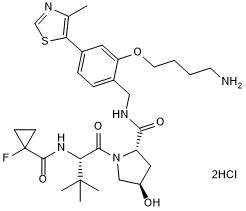
-
GC50729
VH 101 phenol-alkylC6-amine
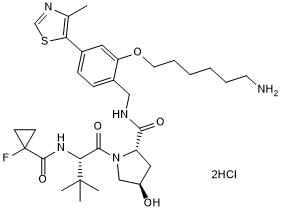
-
GC65135
VZ185
VZ185 عبارة عن مسبار مزدوج قوي وسريع وانتقائي يعتمد على von Hippel-Lindau من BRD9 و BRD7 مع DC50s من 4.5 و 1.8 نانومتر ، على التوالييعتبر VZ185 سامًا للخلايا في خلايا EOL-1 و A-402 ، مع EC50s من 3 نانومتر و 40 نانومتر ، على التوالي
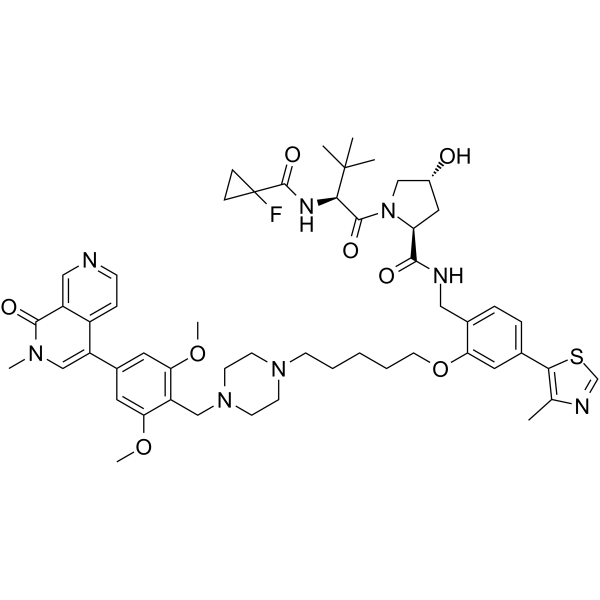
-
GC50652
xStAx-VHLL
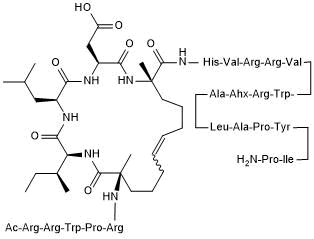
-
GC70162
YX-2-107
YX-2-107 هو نوع من PROTAC الذي ينحل بشكل انتقائي CDK6 (IC50 = 4.4 nM). يمكن لـ YX-2-107 تثبيط فسفرة RB وتعبير FOXM1 بشكل فعال في vitro ، وإدخال عرق الجرذان Ph + ALL في vivo. يمكن استخدام YX-2-107 في دراسة سرطان الدم الحاد لخلايا B المصابة بورم Philadelphia chromosome-positive (Ph+).
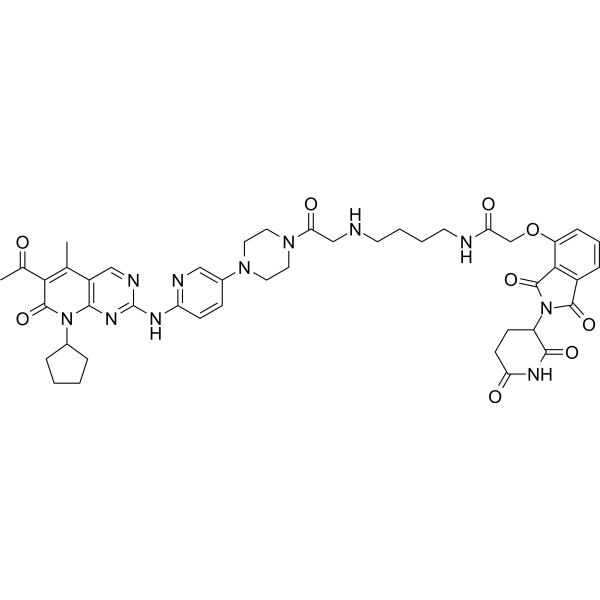
-
GC65269
ZXH-3-26
ZXH-3-26 عبارة عن PROTAC متصل بواسطة روابط لـ Cereblon و BRD4 مع DC50 / 5h من 5 نانومتريشير DC50 / 5h إلى تدهور نصف الحد الأقصى بعد 5 ساعات من المعالجة بحوالي 5 نانومتر
